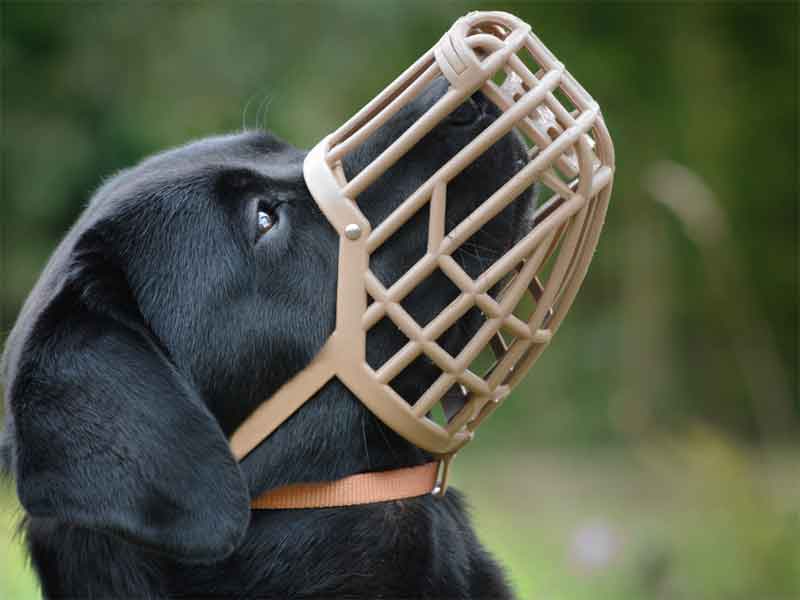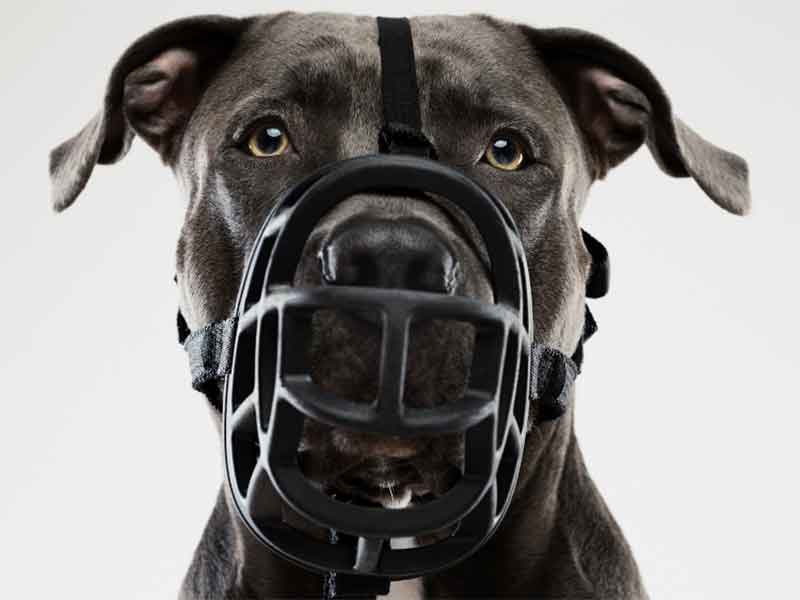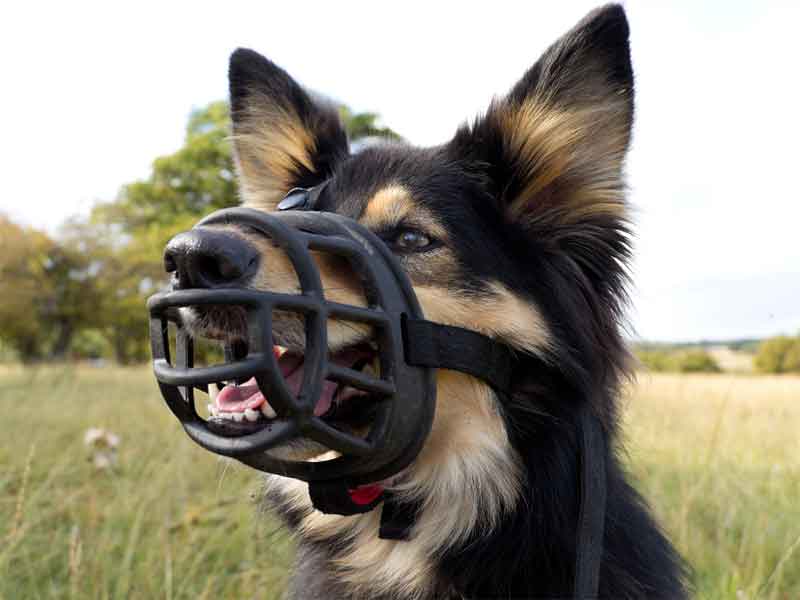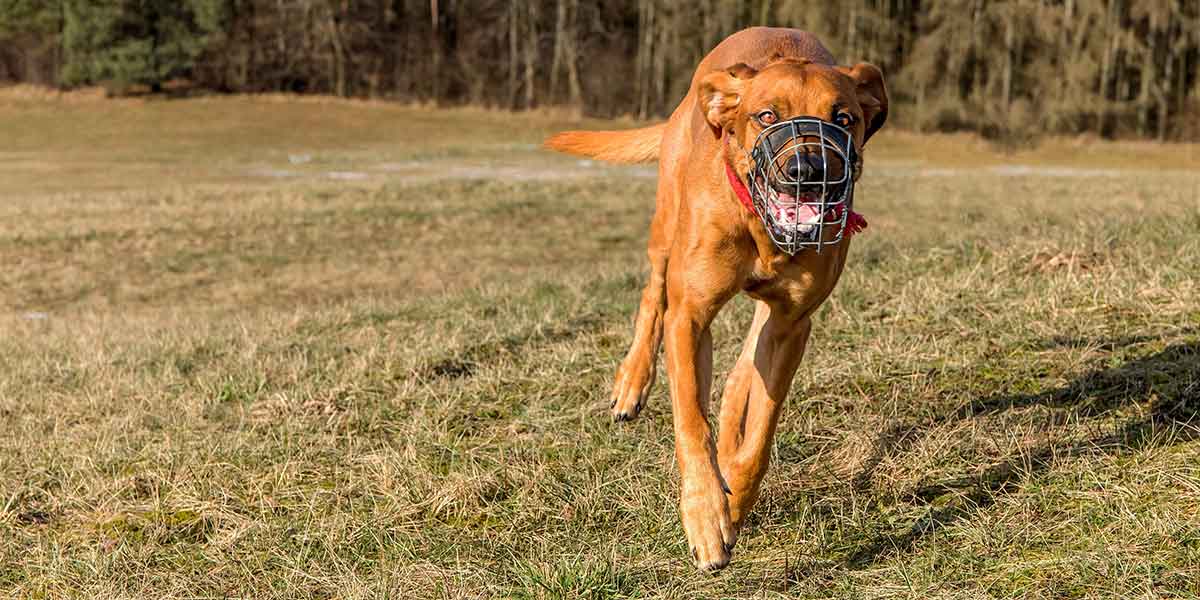Last week we got the updated government guidance of what the ban on the XL Bully “type” would look like as many of you reading this will know, breed specific bans just don’t work because they do not address the root cause of the issue. At Hounds & Hooves we feel passionately about client support and we know that there are many responsible guardians out there that will be very worried right now.
Historically breed specific legislation requires a banned breed to go through an exemption process so that a guardian can continue to legally own them. This includes (but isn’t limited to) an assessment and guardians are then also expected to meet certain conditions such as neutering and being muzzled and on lead in public places-including cars.
I want to reach out to guardians and ask you to be proactive now. We have taught muzzle training via the cone game for a long time now. Not because we think your dogs are dangerous because we know that any dog backed into a corner where all signals have been ignored can cause damage if they feel they have no other option.
Muzzle training shouldn’t just be for banned breeds. It should be something that we all consider a necessary part of dog training. This blog talks about different types of muzzles and also has a step by step guide on how to train your dog to wear one.
When muzzle training your dog it’s important to make sure you allow enough time for your dog to get used to the muzzle on their own terms before you need them to wear it out and about. Muzzle training should take place over a series of short sessions, ideally over a period of at least a few days, taking care to make sure your dog associates the muzzle with fun and positive situations. Much the same way that we might introduce a puppy to travelling in the car or a dog to a new harness.


What muzzle should I buy?
We recommend using a basket type muzzle as these allow you to feed your dog treats while they are wearing it. A basket muzzle will also allow your dog to pant and drink freely. The most important thing is to make sure that any muzzle you buy fits your dog correctly – with a basket muzzle there should be a small space between their nose and the end of the muzzle, so it is not uncomfortable to wear. Over the last few years there has been an explosion in the muzzle market and whilst you can pop down to a pet shop and buy a generic muzzle, I would advise looking into getting a made to measure, custom fitted one as this will provide your dog with the most comfort-they also come in a variety of colours so if you are someone that enjoys twinning with your dog this is definitely an option that will bring a bit of light-heartedness.
There are two main ways to train your dog to wear a muzzle you can use a lure or you can shape the behaviour. My preference would always be to shape the behaviour and give the dog a choice. However, without formal direction from a trainer via a class or 1-1 it can be difficult to get the timing right and without realising you can potentially end up training something completely different. Below I will discuss both.


Muzzle training with a Lure;
Step 1 - Introducing your dog to a muzzle
One of the biggest mistakes we see with new pieces of equipment or experiences is that guardians just chuck their dogs in at the deep end and expect them to get on with it. Think back to when you were a child. Perhaps your guardian bought you a new coat or a pair of shoes whilst out shopping. You put the items on only to realise they are too big or the stitching itches, but instead of being told you can change you are told that, it will be fine, you will just grow into it. Before you even attempt to put the muzzle on your dog. Place the muzzle on the floor and let your dog have a good sniff. Every time they go close to the muzzle mark and reward. Do this exercise multiple time before asking them to put their nose inside.
Step 2- Getting your dog comfortable with putting their nose in the muzzle.
Gently hold the muzzle in a cupped hand. You will need to be able to place a treat in the muzzle without it falling through. Take a treat and let your dog see you place it just at the opening of the muzzle. Allow your dog to take the treat from inside the muzzle. Repeat this as many times as required, ideally over a few sessions. Your dog should come to see the muzzle as a treat dispenser and be keen to put their face in it. Once your dog is willingly placing their head into the entrance of the muzzle to retrieve the treat, start putting treats further back into the muzzle, closer to the front, where their nose should eventually be.
Step 3 - Getting your dog comfortable with the muzzle
Hold the muzzle in your hand and wait for your dog to place their head inside. Once inside, take the treat and feed it to your dog through the side or end of the muzzle. At this point you may find it easier to use a treat in a squeezy tube that will fit in the gaps of the muzzle such as a small amount of pâté or spreadable cheese. Repeat as many times as required until your dog is happy keeping their face in the muzzle. The aim is to get them readily placing their head in the muzzle in anticipation of a threat whenever the muzzle comes out.
Step 3 - Introducing the straps behind the head
Next, instruct your dog to put their head in the muzzle using the treat. Once their head is in the muzzle, lift up the straps behind their ears, without fastening them. This will introduce them to the sensation of the straps. Treat your dog through the muzzle again. Remove the muzzle and repeat this step a few times, still without doing up the straps. This will familiarise your dog with the feeling of the straps around their head without the muzzle being closed.
Step 4 - Fastening the muzzle
When your dog is happy with the straps being lifted, fasten the muzzle. Reward them immediately and then calmly remove it. If your dog panics or tries to get the muzzle off, then you may have moved too fast. If this happens, go back a few steps and try building up to it again. Repeat this step until your dog is relaxed about having the muzzle on and fastened. Once your dog is happy, you can slowly build up the amount of time you leave between fastening the muzzle and giving them a treat.
Step 5 - Wearing the muzzle regularly
Once your dog is relaxed wearing the muzzle for a short period of time, make sure you continue regular training so that wearing the muzzle is part of their daily routine. You could try putting the muzzle on as you get your dog ready to go for a walk or put it on at home and do some other fun training or play some games. This will keep your dog engaged with the muzzle and get them used to associating wearing the muzzle with fun things happening. Remember positive associations with new things will increase the likelihood that your dog will enjoy the experience.
If you do not have access to a muzzle and want to start the training right away a cone or paper cup would work brilliantly in the interim.


Muzzle training using shaping;
The Cone Game
The cone game is a great way of getting dogs used to having things on their heads – useful for teaching dogs that harnesses, muzzles, buster collars aren’t scary!
We start with a totally unrelated item, such as a small cone or coffee mug.
- Hold the cone behind your back in one hand and treats in the other.
- Present the cone in front of the dog.
- As soon as he sniffs/licks/looks at the cone, mark with a ‘yes’ and reward.
- Repeat until he is consistently putting his nose to the cone when it is presented.
You can then introduce a cue such as ‘head’ or ‘in’ by saying the word as the dog does the action. Once the head cue is reliable you can start introducing the above steps. But its important to remember; This is a choice-based game – the dog should be choosing to put their head in for every step. Don’t be tempted to wrestle it over their head when they are only offering the tip of their nose; it will reduce progress. Likewise if they are not yet ready for the straps go back a phase.
The future isn’t looking bright at all for XL bully’s and their guardians but by being proactive now you can get ahead of the game. If you start the training now by the time the law is passed the association with the muzzle for your dog should be “awesome that face cage is coming out, what fun stuff are we going to do today”.

